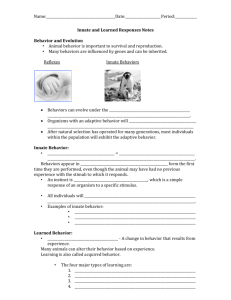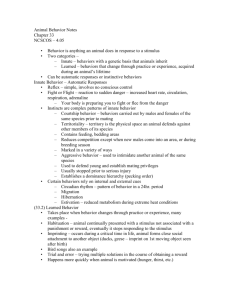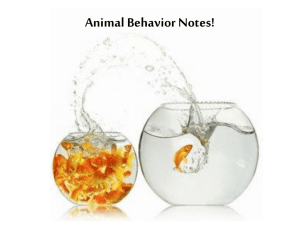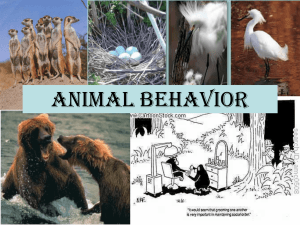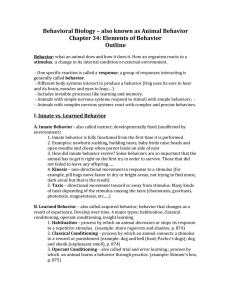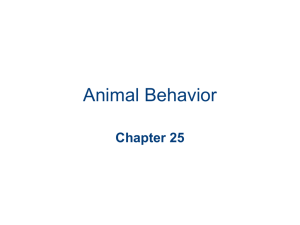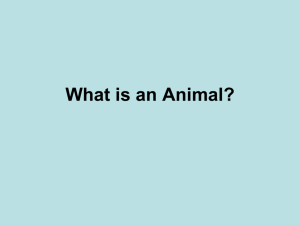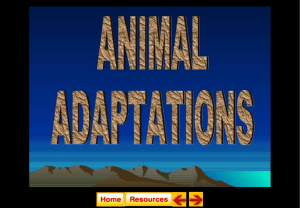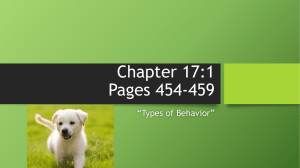Animal Behavior
advertisement
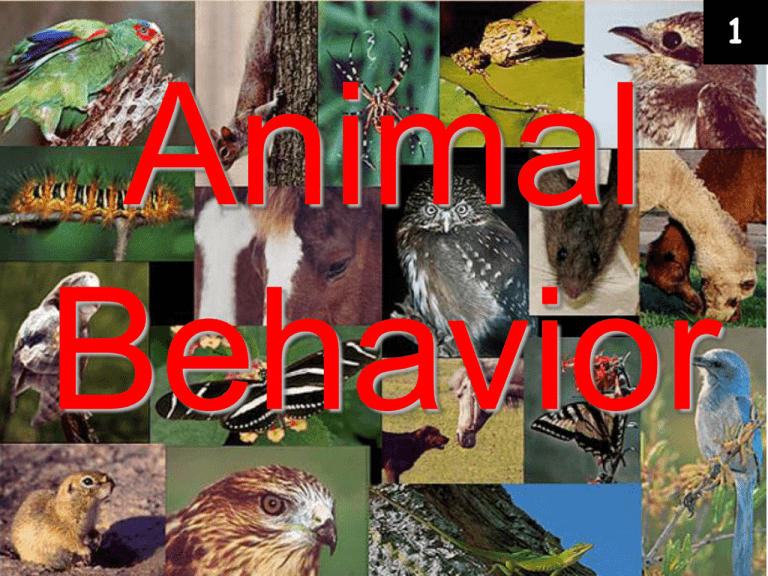
1 Animal Behavior • Behavior – anything an organism does in response to a stimulus in its environment. Behaviors develop through interactions between genes and environmental inputs. 2 Behavior is ADAPTIVE – adapting allows animals to survive!!! Types of behaviors 1. Innate Behavior • includes both automatic responses and instinctive behaviors 2. Learned Behavior – a result of previous experiences 3 Innate Behavior • Reflexes – automatic responses that require no thinking at all. 4 Innate Behavior Instincts 1. Aggression – To fend off predators and competitors – To protect young and to protect food sources 2. Submission – Shown by the weaker animal 3. Courtship – Finding a mate. 4. Territoriality – Animals that have territories will defend their space 5 Innate Behavior 6 • Instincts 5. behavioral cycles a) circadian rhythm – occur in daily patterns • External cues. • Important in determining the sleeping and feeding patterns of all animals. Innate Behavior 7 Behavioral cycles b) Migration – periodic movement from one place to another - Geographical clues - Earth’s magnetic field. - Can be triggered by hormones Monarch Migration Salmon Migration Innate Behavior Behavioral cycles c) Hibernation – dormancy during winter – Reduce their need for energy – Can be caused by temperature change and day length change 8 Innate Behavior 9 also known as "summer sleep" Behavioral cycles d) Estivation –dormancy during summer. -takes place during times of heat and dryness Nile Crocodile Snails in S. Australia Desert Tortoise Learned Behavior • These behaviors are acquired or learned over time. • Organisms can alter their behaviors as a result of experience. • Allows animals to adapt. 10 Learned Behavior • Habituation – organism decreases or stops its response to a repetitive stimulus that neither rewards nor harms the animal 11 By ignoring the stimulus, animals can spend their time & energy more efficiently. Deer have learned to come into yards to feed with no fear of people or barking dogs. When prairie dog towns are located near trails used by humans, giving alarm calls every time a person walks by is a waste of time and energy for the group. Behaviors that involve both innate and learned behaviors - - 12 • Imprinting – animal returns to the place of its birth to lay its eggs – animal imprints on its mother Imprinting •An animal imprints on its mother 13 Adaptations for Defense • Mechanical defense is incorporated into 14 the physical structure of the organism. – claws, sharp tusks, stingers, shells, ink, size Mechanical defense camouflage. 15 Chemical defense occurs when the animal produces stinging sensations, paralysis, neurotoxins, poisoning, or just a bad taste. Blue Arrow frogs 16 Monarch on Milkweed Bombardier beetles Lion Fish Behavior •An animal’s response to a stimulus. •Innate behaviors are instinctive, like birds defending their nesting place, and are influenced by genes. •territorial behaviors, organisms defend an area and keep out other organisms. •Learned behaviors are changed by various experiences, such as training a family pet to come when its name is called. Clip
